
Although the first Queen of England is widely considered to be Mary Tudor, throughout the medieval period there were many women who ruled as Queen Regent, Queen Consort, Queen Dowager, or even in their own right.
Here are ten of the most important.
1. Bertha of Kent
Bertha, a Frankish princess, was born in the early 560s to Charibert I, King of Paris, and a woman named Ingoberga. She was married off to King Æthelberht of Kent, an Anglo-Saxon pagan. In 597, St Augustine arrived in England to convert the Anglo-Saxons to Christianity.
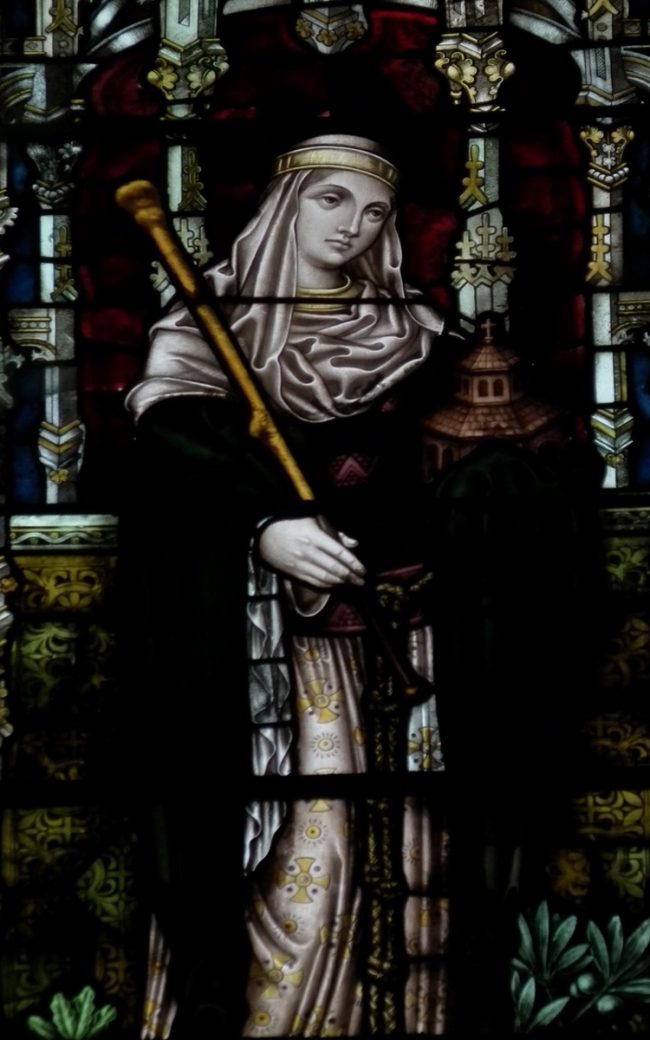
Bertha is depicted in a stained glass window of the Chapter House, Canterbury Cathedral. Image source: Mattana / CC BY-SA 3.0.
It is widely believed that Bertha was instrumental in persuading her husband to embrace the new religion, as all accounts of St Augustine’s work named her as a prominent figure. Pope Gregory wrote to Bertha in 601, praising what “great succour and what charity you have bestowed upon Augustine”. She was compared to Helena, the mother of Emperor Constantine, who persuaded her son to convert to Christianity.
2. Æthelflæd
The eldest daughter of Alfred the Great, Æthelflæd was born in 870, a time when Viking invasions were at their height. By 878, East Anglia and Northumbria were conquered, meaning most of England was under Danish Viking rule.
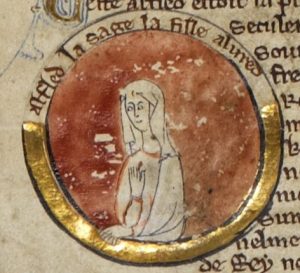
Æthelflæd in the 13th century Genealogical Chronicle of the English Kings.
Æthelflæd’s father, Alfred, married her to Æthelred to cement a strategic alliance between the surviving English kingdoms. After Æthelred’s death in 911, Æthelflæd ruled Mercia as Lady of the Mercians, where she would transform the balance of power.
She embarked on a defensive rebuilding programme in towns such as Tamworth, Warwick and Bridgnorth, recaptured Derby and was offered loyalty by the Viking leaders of York.
 Watch Now
Watch Now3. Matilda of Flanders
According to legend, when the Norman Duke William the Bastard sent his representative to ask Matilda’s hand in marriage, she retorted she was too high-born to marry a bastard. Furious at this snub, William rode to find Matilda, dragged her off her horse by her long braids and threw her down in the street.
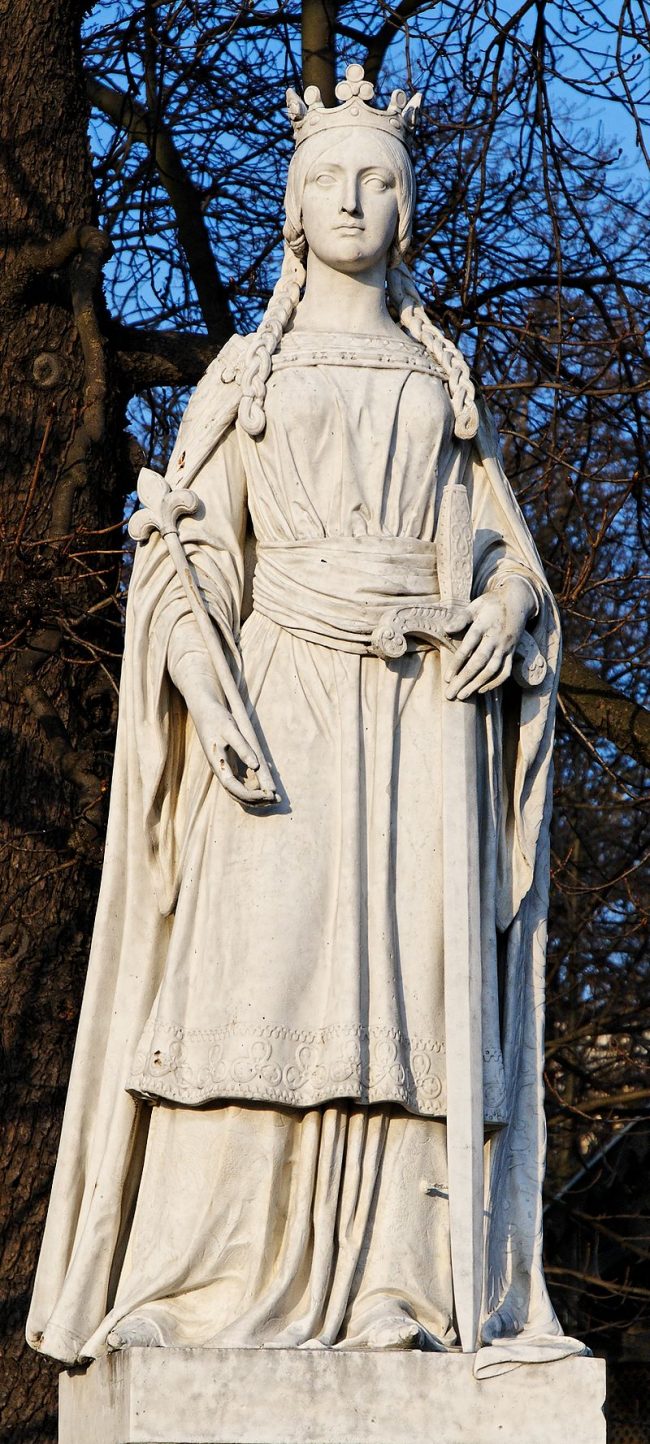
A statue of Matilda of Flanders in the Luxembourg Gardens, Paris. Image source: Jastrow / CC BY 3.0.
Whether such rumours are true or not, the marriage to William – who became William the Conqueror – seemed to be successful. Their 9 children were known for being remarkably well educated, and their daughters were educated at Sainte-Trinité in Caen.
4. Matilda of Scotland
Matilda was the daughter of the English princess Saint Margaret and the Scottish king Malcom III. After a messy succession crisis in Scotland, Matilda married the English king, Henry I, and steadied relations between the two nations.
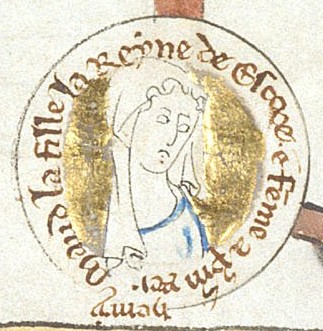
Matilda of Scotland was the mother of William Adelin and Empress Matilda.
In England, she led a literary and musical court, embarked on building projects for the church and ruled in her husband’s name during his absence.
5. Empress Matilda
Matilda of Scotland’s daughter, also named Matilda, was married to the future Holy Roman Emperor, Henry V. When her brother, William Adelin, died in the White Ship disaster of 1120, Matilda returned to England to be nominated heir.
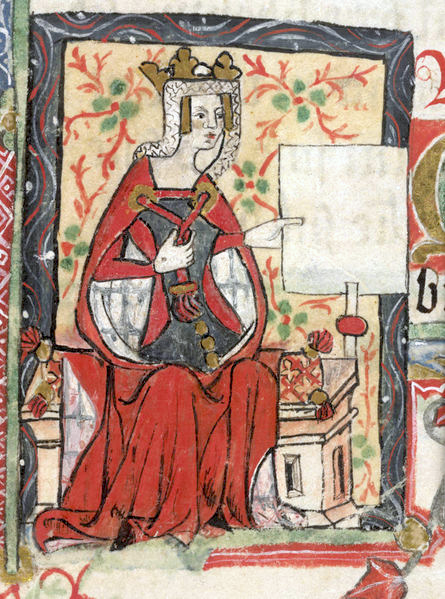
Empress Matilda in ‘History of England’ by St. Albans monks of the 15th century.
She was an unpopular choice in the Anglo-Norman court. When her father died the throne was taken by Matilda’s cousin, Stephen of Blois, who was backed by the English church. Civil war broke out, and the disorder which prevailed gave this period the name of ‘The Anarchy‘.
On one occasion, Matilda was trapped in Oxford Castle, and escaped across the frozen River Isis in a white sheet to avoid capture. Although never officially crowned Queen of England, Matilda was titled Lady of the English, and her son succeeded the throne as Henry II.
6. Eleanor of Aquitaine
Eleanor was born into the House of Poitiers, a powerful dynasty in southwestern France. As a Duchess of Aquitaine, she was the most eligible bride in Europe. Her marriage to Louis VII of France produced two daughters, but was soon annulled on account of consanguinity.
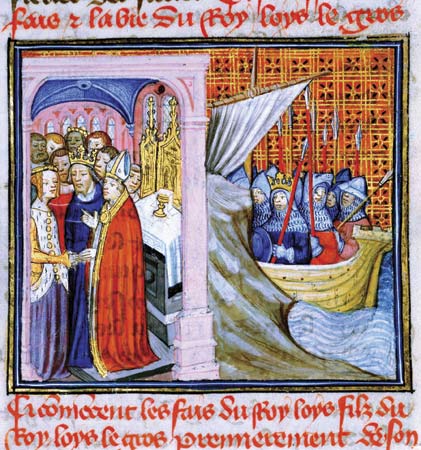
A 14th century depiction of Eleanor marrying her first husband, Louis. On the right, Louis sets sail for the Second Crusade.
Just eight weeks later, she was engaged to the Duke of Normandy. He became Henry II of England in 1154, beaconing a period of stability after civil war had raged.
Eleanor and Henry had eight children, three of whom became kings. Their marriage broke down when Henry imprisoned Eleanor in 1173 for supporting their son’s revolt against him. After her husband’s death, she acted as regent while Richard the Lionheart went on the Third Crusade.
 Watch Now
Watch Now7. Queen Philippa of Hainault
Married to Edward III for 40 years, Phillipa acted as regent for her husband in 1346, and accompanied his expeditions to Scotland, France and Flanders. The eldest of their thirteen children was Edward, the Black Prince.
Her compassion and kindness made her a popular figure, especially in 1347 when she persuaded her husband to spare the lives of the Burghers of Calais. The Queen’s College in Oxford was founded in her honour.
8. Isabella of Valois
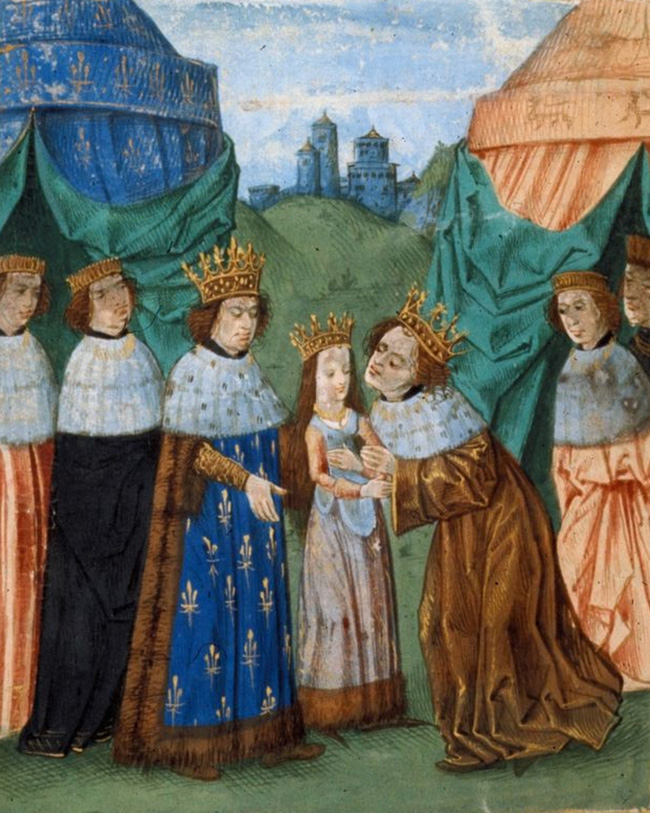
Miniature detailing Richard II of England receiving his six-year-old bride Isabel of Valois from her father Charles VI of France.
Isabella was the daughter of Charles VI of France and Isabeau of Bavaria. At the age of six, she was married to Richard II, who was then 29.
Despite the union acting as a political exercise to improve French and English relations, Richard and Isabella developed a respectful relationship. He regularly visited her in Windsor and entertained her and her ladies-in-waiting.
Richard’s death cut the marriage short, leaving Isabella widowed at the age of 9. She went on to marry Charles, Duke of Orléans and died in childbirth at the age of 19.
Her sister, Catherine, would briefly marry Henry V and give birth to the future Henry VI. Through her second marriage to Owen Tudor, Catherine became the grandmother of the future Henry VII.
9. Anne Neville
As a daughter of Richard Neville, who was known as ‘Warwick the Kingmaker’, Anne was used as an important bargaining chip in the Wars of the Roses. She was originally betrothed to Edward, Prince of Wales, who was the son of Edward IV.
After the death of Prince Edward, she married the Duke of Gloucester, later Richard III. Anne bore a son, Edward of Middleham, who predeceased his parents. Anne also died of tuberculosis in 1485, and later that year Richard was slain at the Battle of Bosworth.
10. Margaret of Anjou
Margaret married King Henry VI, and ruled as Queen of England and France in accordance with the agreements made by Henry V at the Treaty of Troyes. After her husband suffered from bouts of insanity, Margaret ruled in his place.
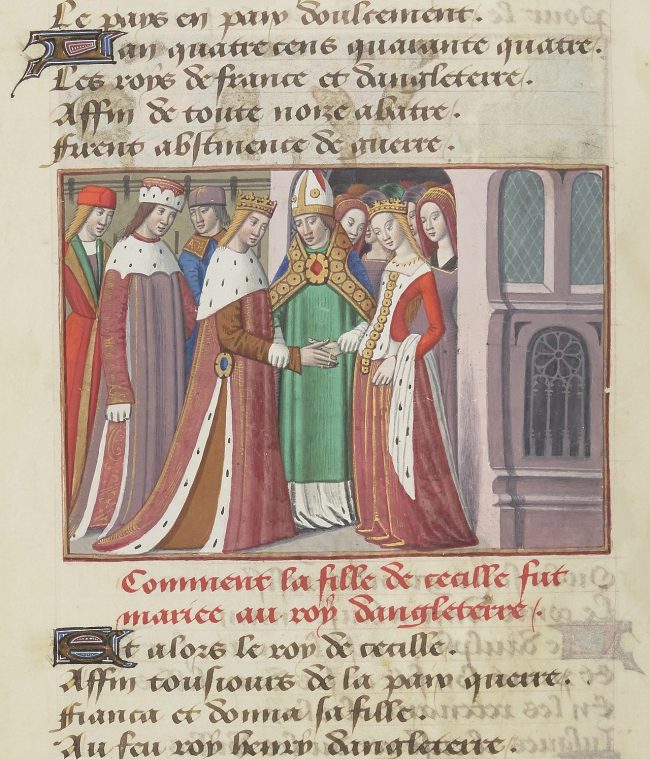
The marriage of Henry VI and Margaret would break down when Henry suffered bouts of insanity.
Her provocative actions and position as leader of the Lancastrian cause made her a key player in the Wars of the Roses, although she would never enjoy much success. In her final years, she lived in France as a poor relation of the king, and died there aged 52.














